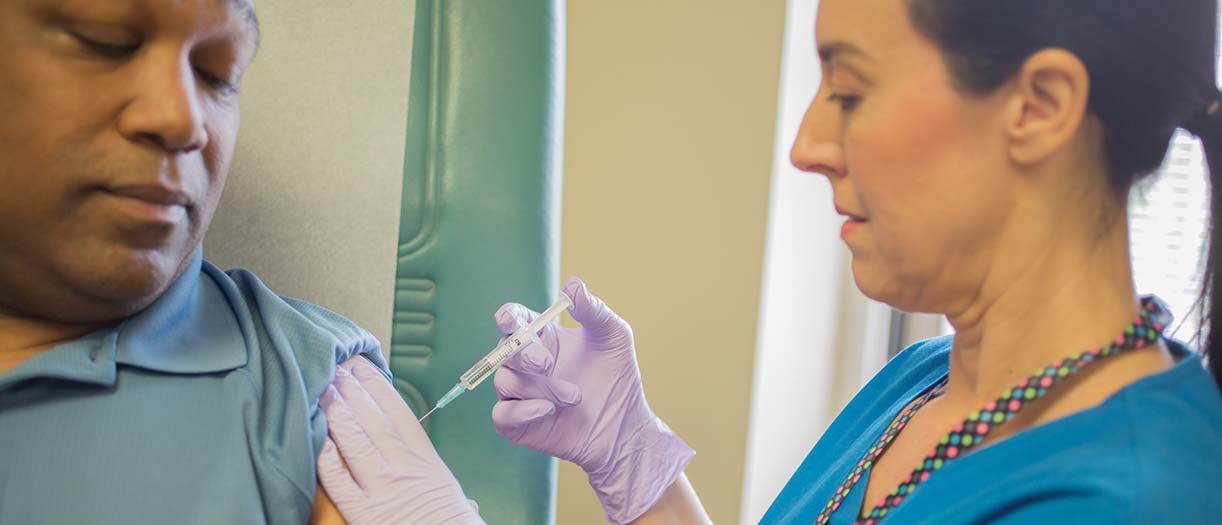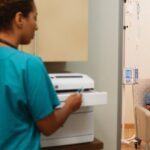What is the financial cost of preventable needlestick injuries?
Needlestick injuries (NSIs) pose a significant clinical and economic threat to healthcare institutions globally. When most are considered largely preventable, you may be able to reduce your spending by implementing safer sharps practices.1,2
Average cost of a needlestick injury
According to a study held in a German university hospital, healthcare and general economic costs per needlestick injury varied from €500 to €1,600 in 2016.3 The cost of a needlestick injury encompasses a range of factors including:4,5
- Legal consequences (litigation and compensation claims)
- Counselling for injured workers
- Staff absences and replacements
- Post-exposure prophylaxis to prevent or manage bloodborne virus transmission
- Testing for infection in the injured worker and, if known, the patient on whom the needle/sharp had been used
- Short- and long-term treatment of chronic bloodborne viral infections that are transmitted to injured workers
In the NHS alone, 1,213 successful incident claims for needlestick injuries between 2012 – 2017 cost the organisation ₤4,077,441 (roughly €4,602,261), equivalent to the annual salaries of 125 band 5 nurses.1
Learn more about the burden of needlestick injuries: Feeling down after a needlestick injury? You’re not alone
Can safety-engineered needles reduce costs?
According to the NHS, one of the main causes of needlestick injuries is not using safety sharps.1 One study from 2007 reported a 93% reduction in relative risk of percutaneous injuries in areas where safety devices were used.6
The use of safety-engineered needles can minimise litigation and long-term treatment costs as well as reduce direct and indirect post-exposure medical costs.4 In relation to testing costs for healthcare workers who had experienced a needlestick injury, a Swedish study from 2009 estimated an annual cost offset of €850,000 with the introduction of safety-engineered needles across the Swedish population.7
Learn more about the implementation of safety-engineered devices: Needlestick injury protection, according to a medical director
BD Eclipse™ Safety-Engineered Needle
Compliant with ISO 23908 standards for sharps injury protection with hypodermic injection needles,8 the BD Eclipse™ Needle was designed with healthcare professionals and patients in mind.
In one hospital, nurses that implemented the BD Eclipse™ Needle alongside a 1-hour prevention training workshop reported a 64% reduction in needlestick injuries.9
Want to learn more about the BD Eclipse™ Safety-Engineered Needle?
References
- extension://efaidnbmnnnibpcajpcglclefindmkaj/https://resolution.nhs.uk/wp-content/uploads/2017/05/NHS-Resolution-Preventing-needlestick-injuries-leaflet-final.pdf.
- Shen K, Gala S, Benowitz J. Clinical, economic and emotional burden of needlestick injuries and blood exposure on healthcare workers in the European Union. 2021. BD, Franklin Lakes, NJ, USA.
- Frickmann H, Schmeja W, Reisinger E et al. Risk Reduction of Needle Stick Injuries Due to Continuous Shift from Unsafe to Safe Instruments at a German University Hospital. Eur J Microbiol Immunol (Bp). 2016 Sept;6(3):227-37. doi: 10.1556/1886.2016.00025. eCollection 2016 Sep 29.
- Mannocci A, Carli G, Di Bari V et al. How much do needlestick injuries cost? A systematic review of the economic evaluations of needlestick and sharps injuries among healthcare personnel. Infect Control Hosp Epidemiol. 2016 Jun;37(6):635-46. doi: 10.1017/ice.2016.48. Epub 2016 Mar 29.
- Hanmore E, Maclaine G, Garin F et al. Economic benefits of safety-engineered sharp devices in Belgium – A budget impact model. BMC Health Serv Res. 2013 Nov 25;13:489. Doi: 10.1186/1472-696-6963-13-489.
- Valls V, Lozano MS, Yanez R et al. Use of safety devices and the prevention of percutaneous injuries among healthcare workers. Infect Control Hosp Epidemiol. 2007 Dec;28(12):1352-60. Doi: 10.1086/523275. Epub 2007 Nov 1.
- Glenngard AH, Persson U. Costs associated with sharps injuries in the Swedish health care setting and potential cost savings from needle-stick prevention devices with needle and syringe. Scand J Infect Dis. 2009;41(4):296-302. doi: 10.1080/00365540902780232.
- BD data on file, Lee E, ISO 23908 Proof of compliance, 2018
- Van der Molen HF, Zwinderman KA, Sluiter JK, Frings-Dresen MH. Better effect of the use of a needle safety device in combination with an interactive workshop to prevent needle stick injuries. Safety Science. 2011;49(8–9):1180–1186.6. Doi: 10.1016/j.ssci.2011.03.010.
![]() 0050
0050
This list of references to third-party peer-reviewed material and the sites they are hosted on are provided for your reference and convenience only, and do not imply any review or endorsement of the material or any association with their operators. The Third-Party References (and the Web sites to which they link) may contain information that is inaccurate, incomplete, or outdated. Your access and use of the Third Party Sites (and any Web sites to which they link) is solely at your own risk.
BD-83791




